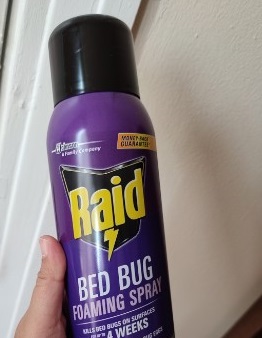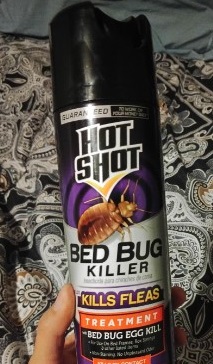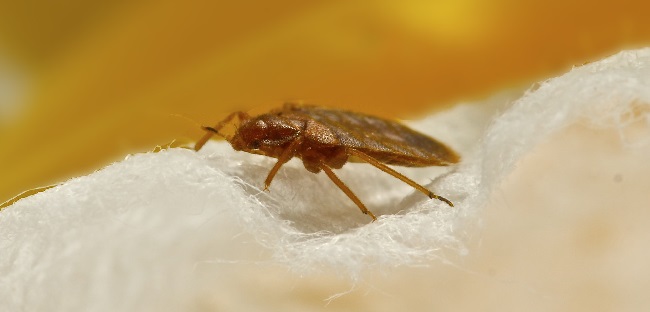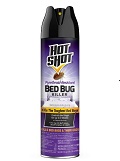Hot Shot vs Raid Bed Bug Killer

The main difference between Hot Shot Bed Bug Killer and Raid Bed Bug Foaming Spray is that Raid uses a foaming formula while Hot Shot uses a non-foaming spray.
The foaming action of the Raid allows it to penetrate deep into cracks and crevices. Hot Shot relies on direct spraying. Raid also advertises having a money-back guarantee, which Hot Shot does not offer.
Raid vs Hot Shot Table
Here’s a quick and easy comparison table to help you quickly see the differences between options.
Product Info
Hot Shot Bed Bug Killer contains two active ingredients – Imiprothrin and Lambda-Cyhalothrin. Together, these target the nervous system of bed bugs, causing paralysis and death.
Raid Bed Bug Foaming Spray uses three active ingredients – Clothianidin, Metofluthrin, and Piperonyl Butoxide. These work to paralyze bed bugs and disrupt their bodily functions.

Guarantee
Raid Bed Bug Foaming Spray comes with a money-back guarantee if the user is not satisfied. Hot Shot Bed Bug Killer does not appear to offer any satisfaction guarantee.
Active Ingredients
Hot Shot Bed Bug Killer contains 0.100% Imiprothrin and 0.025% Lambda-Cyhalothrin. Raid Bed Bug Foaming Spray contains 0.40% Clothianidin, 0.01% Metofluthrin, and 1.00% Piperonyl Butoxide. The combination of both kills bed bugs by attacking their nervous system.
Residual Effect
Hot Shot Bed Bug Killer remains effective at controlling bed bugs for up to 3 weeks on carpeted surfaces after application. Raid Bed Bug Foaming Spray keeps killing bed bugs on surfaces for up to 4 full weeks.
Where to Use
Both products are approved for indoor use only. Hot Shot and Raid can be applied to mattresses, box springs, upholstered furniture, baseboards, floorboards, and carpets.
Raid specifically states it can be used on luggage as well. Neither should be applied directly to pets.

Using Instructions
Raid should be sprayed from 8-10 inches away until damp. Hot Shot recommends an inconspicuous test spray first to check for staining or discoloration.
It also suggests spraying surfaces from 8-10 inches until slightly damp. Both mention avoiding contact with sprayed surfaces until dry.
Safety Precautions
Users of both products are advised to wash their hands thoroughly after use. Contaminated clothing should also be removed and washed before wearing again.
Raid cautions against use by small children. Hot Shot warns that prolonged exposure could cause allergic reactions in some individuals.
Additional Info
Both Hot Shot and Raid claim effectiveness against pyrethroid-resistant bed bugs, providing users with confidence in tackling even the most challenging infestations.

Availability
Hot Shot Bed Bug Killer comes in a 17.5 oz spray bottle. Raid Bed Bug Foaming Spray is available as a 16.5 oz aerosol can.
Indoor vs Outdoor
Both Hot Shot and Raid products are approved for indoor use only. They should not be used for treating outdoor areas.
Foaming vs Non-Foaming
Raid uses a foaming formula that expands into hard-to-reach spaces and cracks. Hot Shot does not foam – it relies on direct spraying for application. The Raid foam allows you to see where you have sprayed visually.
Conclusion
In summary, Raid and Hot Shot take slightly different approaches to killing bed bugs but are both effective indoor pest control solutions.
Raid’s foaming spray allows it to penetrate more crevices, while Hot Shot is more of a direct spray. Consider your specific infestation location and treatment needs when deciding between the two.
Check active ingredients, treatment time, and availability as well. Both products provide thorough bed bug elimination when appropriately applied.

James E. Butkovich, Pest control maven with a knack for eco-friendly & Chemical solutions. Blogger with a mission to make homes pest-free, one post at a time.

